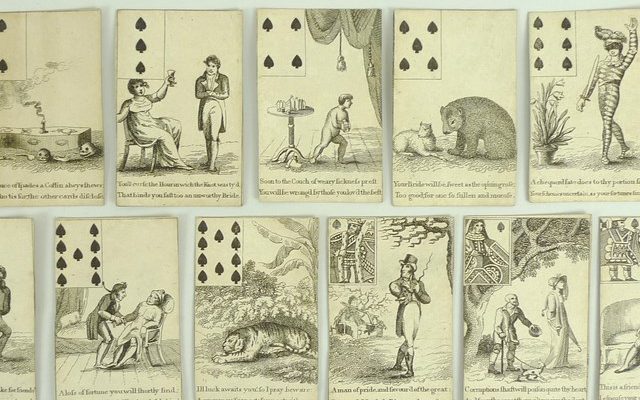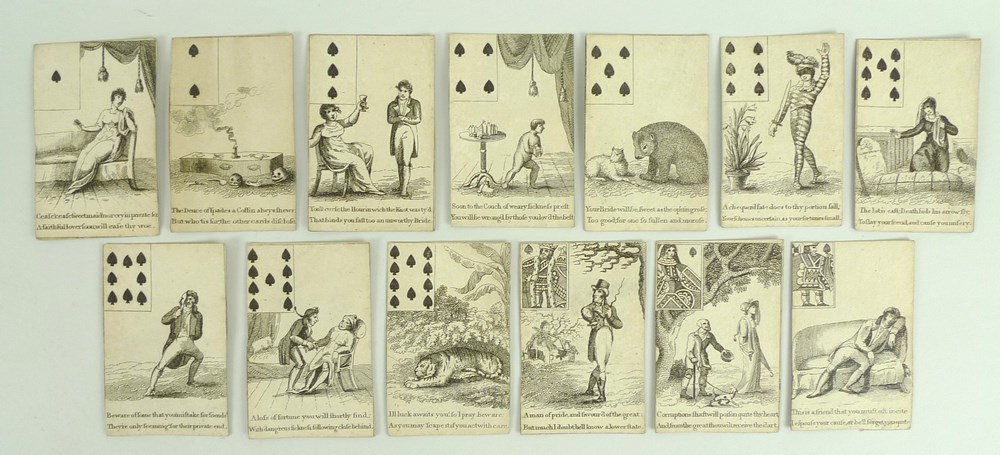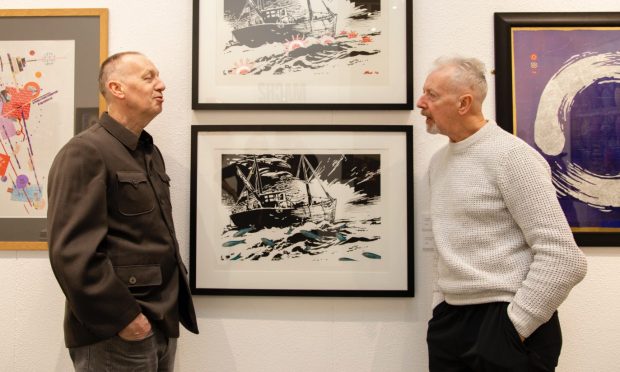THE HIGHEST price for any work of art is the $250 million paid by the tiny, oil-rich nation of Qatar for Paul Cézanne’s The Card Players.
The deal (sorry!) left them with an angular, moody painting of two Aix-en-Provence peasants in a card game. It is impossible to trump that money wise, but for a fraction of the cost the Qatarians could have purchased a fine set of Georgian playing cards which appeared recently at Lincolnshire auctioneers Bateman’s.
Each of this full set of 52 cards was decorated with individual copper-plate engraved designs and each had a fortune-telling text below. The illustrations were often humorous and the text moralistic. For example, the six of diamonds warns the lady holding it, ‘You’ll be a bride & soon a widow too/But second marriage you will have cause to rue.’
The set sold for a 10-times estimate £3200.
In terms of rarity, the Cloisters playing cards purchased for £120,000 by the New York Metropolitan Museum of Art at Sotheby’s in London in 1983 is the oldest known full deck of cards in the world. The 52 cards were made in the Burgundian territories (modern-day Luxembourg and Belgium) around c1470-1480. Although considered priceless, they were recently assessed for insurance at $1.5 million. Historians at The Met believe the cards were used in some form of gambling.
I have seen other 15th Century cards at auction. Perhaps the best known was the celebrated ‘Page of Staves’ tarot card, an illuminated and gold-heightened miniature painting on a card from around 1460. This single card made £23,000.
In terms of sets, a first issue of the ‘52 Counties of England and Wales’ pack, published by Robert Morden in 1676, took £12,000.
One of the most curious sets is ‘All the Bubbles’, which shows scenes of stock market crashes and financial woes from the year 1720. This remarkable set sold for £32,000. The trio of aforementioned prices were achieved at the dispersal of the fabulous Jamie Ortiz-Patino playing card collection at Sotheby’s in 2013.
I recall admiring one of the rarest sets in Britain – scenes from the English Civil War – at The London Museum. Thankfully, Monk’s controversial sacking of Dundee was not one of the cards!











